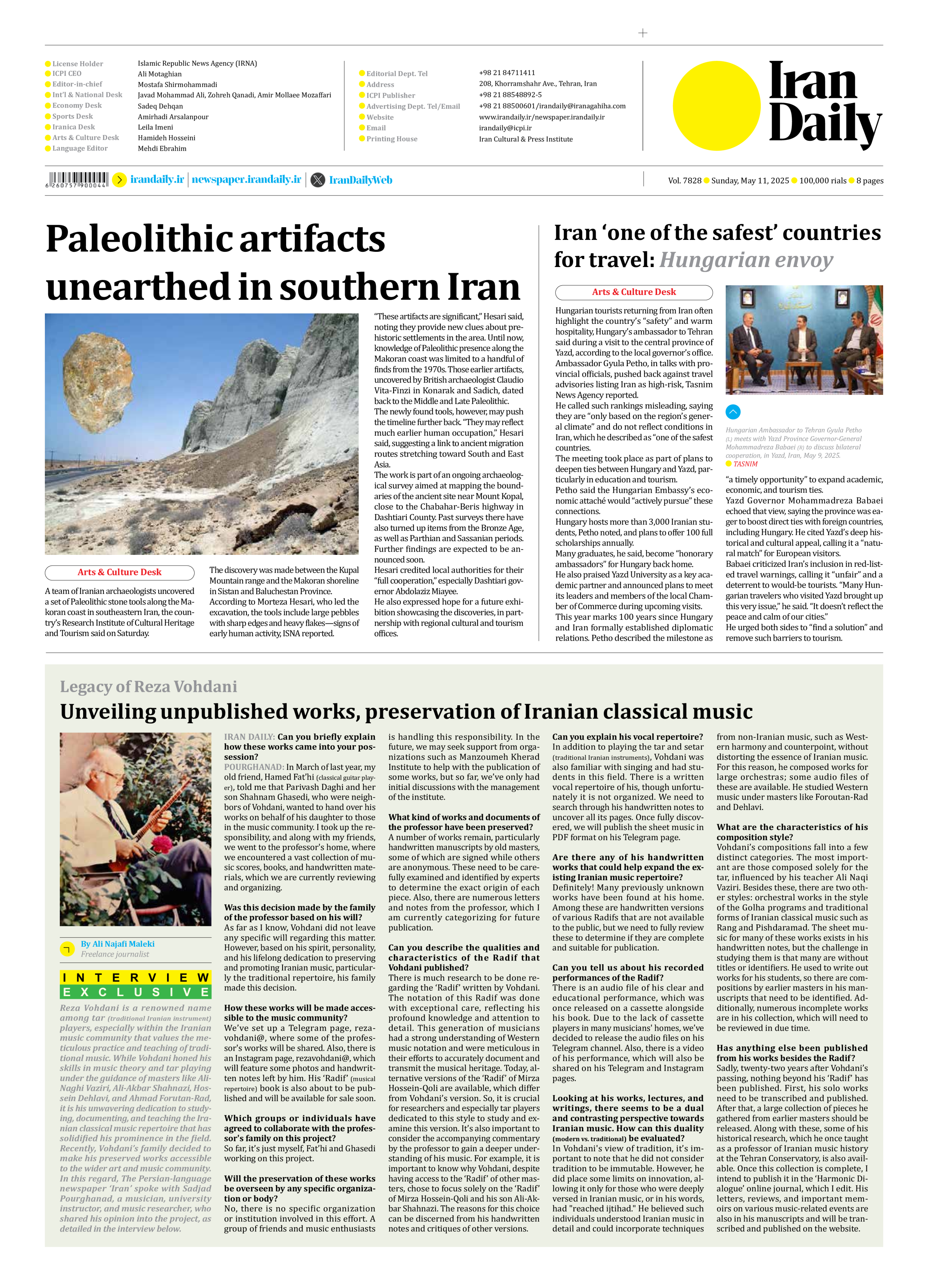
Paleolithic artifacts unearthed in southern Iran
A team of Iranian archaeologists uncovered a set of Paleolithic stone tools along the Makoran coast in southeastern Iran, the country’s Research Institute of Cultural Heritage and Tourism said on Saturday.
The discovery was made between the Kupal Mountain range and the Makoran shoreline in Sistan and Baluchestan Province.
According to Morteza Hesari, who led the excavation, the tools include large pebbles with sharp edges and heavy flakes—signs of early human activity, ISNA reported.
“These artifacts are significant,” Hesari said, noting they provide new clues about prehistoric settlements in the area. Until now, knowledge of Paleolithic presence along the Makoran coast was limited to a handful of finds from the 1970s. Those earlier artifacts, uncovered by British archaeologist Claudio Vita-Finzi in Konarak and Sadich, dated back to the Middle and Late Paleolithic.
The newly found tools, however, may push the timeline further back. “They may reflect much earlier human occupation,” Hesari said, suggesting a link to ancient migration routes stretching toward South and East Asia.
The work is part of an ongoing archaeological survey aimed at mapping the boundaries of the ancient site near Mount Kopal, close to the Chabahar-Beris highway in Dashtiari County. Past surveys there have also turned up items from the Bronze Age, as well as Parthian and Sassanian periods. Further findings are expected to be announced soon.
Hesari credited local authorities for their “full cooperation,” especially Dashtiari governor Abdolaziz Miayee.
He also expressed hope for a future exhibition showcasing the discoveries, in partnership with regional cultural and tourism offices.







